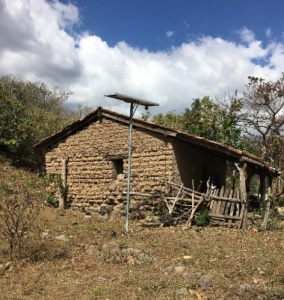Goal:
To expand the evidence base around economic and social impacts of infrastructure improvements.
Activities:
This project consisted of four complementary studies
Water and Sanitation
• SI used a propensity score matching design to study the impact of providing piped water, latrines, technical assistance, and capacity building on household economic welfare, health, and education.
• The evaluation used three waves of survey data with a panel of 3,284 households from 2011 to 2013.
Rural Electrification
• SI used randomized encouragement and propensity score matching approaches to study how construction of distribution lines and connection of households to the electrical grid affected household income, educational attainment, time use, and health outcomes.
• The evaluation used five waves of survey data with a panel of 4,800 households
Solar Panel System
• SI examined the performance of the solar panel system component of the rural electrification project.
• SI used a non-experimental qualitative design to assess the extent to which the solar panel component achieved and sustained its goals.
Connectivity Project
• SI studied how the construction of the North Transnational Highway affected market access, transportation costs, land use, time allocation, and household incomes.
• This evaluation used regression discontinuity, continuous treatment, and dynamic regional computable general equilibrium approaches.
• The evaluation used five waves of survey data with a panel of 3,611 households from 2009 to 2013.
Results:
Water and Sanitation Sub-Activity Impact Evaluation
• Beneficiaries of the water and sanitation projects are about 6% less likely to be classified as poor (based on U.S. $2 a day poverty in 2012).
• The probability of a household in a treated segment having a household tap increased 25%.
• Households in the treatment segment were 20% less likely to collect water.
• Households in the treatment segment spent 1.3 hours less collecting water each week.
• Households that still collected water saved 1.5 hours per person.
Rural Electrification Sub-Activity Impact Evaluation
Rural Electrification Solar Panels Evaluation
Connectivity Project Impact Evaluation
• The Northern Transnational Highway modestly reduced travel time to a household’s nearest market as well as the travel time to various services, and lowered the cost of accessing them. Yet there were no significant changes in agricultural sales, harvests, land values, income or expenditure.
• The Northern Transnational Highway made alternative markets more accessible to households.
• Households in the East experienced a 90 minute reduction in their travel time to the Metapan’s market and an 80 minute reduction to Chalatenango’s markets in the West.
Related Resources:
SETEPLAN and MCC evaluate impact of rural electrification component of Fomilenio I
Contact: projects@socialimpact.com


 Photo credit: Gabrielle Plotkin, SI
Photo credit: Gabrielle Plotkin, SI